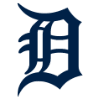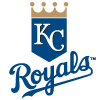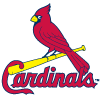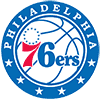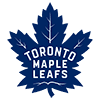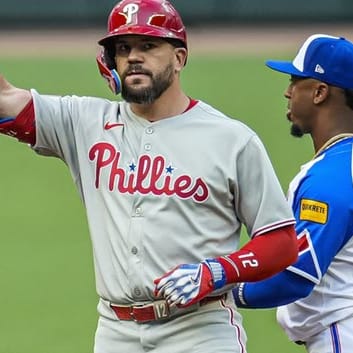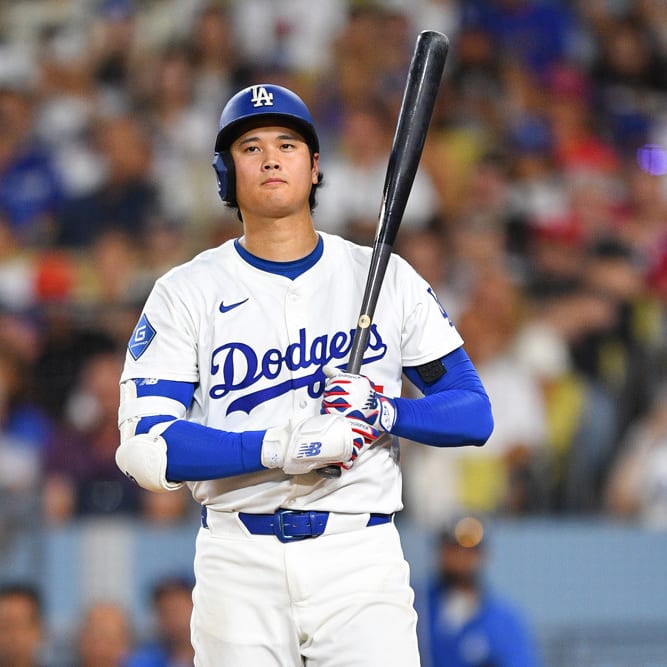Braves 2015 Team Preview: In With The New
Coming off a 96-win 2013 campaign, a season in which the Braves won the NL East by 10 games over the preseason favorite Nationals, expectations were generally high for Atlanta. Most assumed the Nationals would finally get it together and win the division, but the consensus seemed to be that the Braves would at least push for a Wild Card spot.
How quickly hopes and expectations can go out the window. Kris Medlen and Brandon Beachy blew out their elbows on consecutive days in spring training, forcing the team to turn to the likes of Aaron Harang and David Hale to fill rotation spots. After a 17-7 start, the Braves began to slowly unravel, as their free-swinging tendencies finally caught up them. Dan Uggla hit .175 over the first two months and mercifully lost his roster spot, while B.J. Upton's downward spiral continued. Justin Upton swung away at career-high rate and Jason Heyward and Andrelton Simmons struggled offensively, resulting in the Braves finishing 29th in runs scored with 573.
Chris Johnson and Mike Minor both regressed significantly, with the former posting a .263/.292/.361 line after finishing as the runner-up for the NL batting title in 2013. Minor battled shoulder issues in spring training and failed to ever get going, as he couldn't keep the ball in the park or retire lefties with much consistency. While Atlanta still managed to finish tied for second in the division with a 79-83 record, the
Braves 2015 Team Preview: In With The New
Coming off a 96-win 2013 campaign, a season in which the Braves won the NL East by 10 games over the preseason favorite Nationals, expectations were generally high for Atlanta. Most assumed the Nationals would finally get it together and win the division, but the consensus seemed to be that the Braves would at least push for a Wild Card spot.
How quickly hopes and expectations can go out the window. Kris Medlen and Brandon Beachy blew out their elbows on consecutive days in spring training, forcing the team to turn to the likes of Aaron Harang and David Hale to fill rotation spots. After a 17-7 start, the Braves began to slowly unravel, as their free-swinging tendencies finally caught up them. Dan Uggla hit .175 over the first two months and mercifully lost his roster spot, while B.J. Upton's downward spiral continued. Justin Upton swung away at career-high rate and Jason Heyward and Andrelton Simmons struggled offensively, resulting in the Braves finishing 29th in runs scored with 573.
Chris Johnson and Mike Minor both regressed significantly, with the former posting a .263/.292/.361 line after finishing as the runner-up for the NL batting title in 2013. Minor battled shoulder issues in spring training and failed to ever get going, as he couldn't keep the ball in the park or retire lefties with much consistency. While Atlanta still managed to finish tied for second in the division with a 79-83 record, the team was 17 games back of the Nationals and nine games out of a Wild Card spot when it was all said and done.
The poor overall showing, and especially dismal performances from some of his major free agent signing, ultimately cost Frank Wren his job as general manager. Former Indians and Rangers GM John Hart was hired on as the president of baseball operations and immediately began shaking up the roster. The moves just kept coming, and in the end, it was one of the busiest offseasons for any team in recent memory, perhaps only rivaled by the Padres' overhaul under new GM A.J. Preller.
However, most of the moves Hart made were geared toward future success. The Braves will be opening a new state-of-the-art ballpark in 2017, and it seems Hart is hoping the young talent he acquired comes together in time to be highly competitive in two years. With the major league roster depleted, manager Fredi Gonzalez, who's entering the final year of his contract, may have a hard time reaching the team's win total from a year ago.
Offseason Moves
Traded Jason Heyward and Jordan Walden to the Cardinals for Shelby Miller and Tyrell Jenkins.
While Heyward ranked among baseball's elite defenders last season -- he led the majors in defensive runs saved with 32 -- his offensive production fell well short of expectations. Heyward improved his average by nearly 20 points but finished three homers shy of his 2013 total despite playing in 45 more games (209 more PA), resulting in a 60-point drop in ISO (from .173 to .113). He struggled against left-handed pitching to the tune of a .477 OPS, down from .802 in 2013, and he hit just .268 against four-seamers, well below the league average. It wasn't all negative, offensively, with Heyward posting the lowest strikeout rate of his career (15.1%) and swiping 20 bags on 24 attempts after getting caught four times in six attempts the year before. However, Heyward has one year remaining on his contract and it seems the Braves saw the writing on the wall. Walden, meanwhile, was not able find the strike zone consistently in 2014, as his walk rate nearly doubled, going from 2.7 BB/9 in 2013 to a career-high 4.9 BB/9, but he averaged close to 1.0 K/9 more than he did in 2013 (from 10.3 K/9 to 11.2) and held opposing right-handers to a .185/.292/.196 line. If Trevor Rosenthal were to falter in St. Louis, Walden could get another opportunity to close. Miller's stock fell significantly following a disappointing 2014, but the Braves will be banking on him regaining the effectiveness of his fastball-curveball combo and serving as a quality middle-of-the-rotation starter for years to come. Jenkins was the first of many buy-low minor league arms acquired by John Hart.
Traded Justin Upton and Aaron Northcraft to the Padres for prospects Max Fried, Jace Peterson, Dustin Peterson, Mallex Smith and San Diego's fourth international bonus pool slot.
Most owners didn't profit much from Upton's production in 2014, but they got their money's worth. He supplied 29 homers (.221 ISO), good enough for fourth in the NL, and drove in a career-high 101 runs while slightly improving his average and matching his stolen base total from 2013. The 27-year-old also set a less distinguished career high with 171 strikeouts (26.7% K%), matching his brother's number and joining him in the Braves' record books for most strikeouts in a single season. Upton walked less (9.4% BB% from 11.7%) and finished with a .169/.233/.325 batting line in September, and the move to Petco Park figures to result in a dip in power production (17.9% HR/FB with Atlanta). The return for Atlanta looks rather underwhelming, but it's important to keep in mind that the organization seems to be looking several years ahead -- again, to when their new stadium opens -- and so it makes some sense that they would want to take a chance on several guys who could pan out.
Traded Evan Gattis to the Astros for Mike Foltynewicz, Rio Ruiz and Andrew Thurman.
Despite being limited to just 108 games due to a back injury and various illnesses in 2014, Gattis still finished third among catchers in home runs, behind only Devin Mesoraco (25) and former teammate Brian McCann (23). His strikeout rate jumped by three percent (from 21.2% to 24.2%), but his BABIP improved by more than 40 points, resulting in a 20-point increase in batting average. He continued to struggle against breaking balls, as evidenced by his 36.0% whiff rate against such pitches last season, but his overall development at the plate was encouraging. The 28-year-old graded out as one of the worst defensive catchers in the majors, but he will likely be largely relieved of his backstop duties with the move to Houston. It's an appealing scenario for fantasy owners, as he's still catcher eligible, should see a higher volume of playing time in left field and now gets to play half of his games in a much more hitter-friendly home park in Houston. Foltynewicz features a fastball that averaged 96.7 mph last season, but he'll need to show improvement with his secondary stuff to earn the Braves' final rotation spot in spring training. Eight of Ruiz's 11 homers last year came at High-A Lancaster's extremely hitter-friendly home park, but his hit tool grades out above average and it seems likely he will eventually become a major league regular at third base for Atlanta. Thurman, a second-round pick in 2013, struggled at the Low-A level last season (5.40 ERA, 1.40 WHIP and will likely be forced to give it another try to start 2015.
Signed free agent Nick Markakis to a four-year, $44 million contract.
The Orioles predictably declined Markakis' $17.5 million contract option at the conclusion of the 2014 season but the 31-year-old outfielder was able to land a four-year pact with Atlanta, largely on the strength of his strong on-base and contact skills. Manager Fredi Gonzalez has been without a quality leadoff option in recent years, and Markakis figures to fill that hole, at least against left-handed pitching early on. He may move down in the order against right-handers, if the speedy Eric Young Jr. works his way into a platoon role in left, but that will need to be sorted out in spring training. A lot will hinge on Markakis' health after he was forced to undergo neck fusion surgery in mid-December. Apparently, the Braves knew he needed the surgery when they signed him, as it seems they are banking on him maintaining the durability he showed in his nine years with Baltimore. Markakis appeared in at least 147 games in all but one of his years with the Orioles and is expected to be mostly unrestricted in spring training.
Traded David Carpenter and Chasen Shreve to the Yankees for Manny Banuelos.
Banuelos was once a top prospect in the Yankees' system before being forced to undergo Tommy John surgery in October of 2012. Still just 23 years old, Banuelos will be part of the competition for the club's final rotation spot in spring training, though he only logged 76.1 innings last season after returning from the injury and the Braves may very well want to see him have success and work later in games in the minors before thinking about a promotion. The lefty only made it out of the fifth inning twice in 26 appearances (25 starts) with the Yankees' affiliates last season.
Signed Jason Grilli to a two-year, $8 million contract.
Grilli's fall from grace was dramatic, as he lost his job as the Pirates' closer less than three months into the 2014 campaign and was subsequently shipped off to the Angels after making the NL All-Star team in 2013. He was, however, able to recoup a good deal of value while with Anaheim, posting a 3.48 ERA (2.15 FIP), 1.16 WHIP and 9.6 K/9 in 40 appearances. He's no threat to Craig Kimbrel's ninth-inning job, but Grilli likely has a leg up on Jim Johnson for the setup role and thus could pick up the occasional save on days when Kimbrel is off.
Signed Dian Toscano to a four-year, $7.5 million contract.
In 261 games (736 PA) in Cuba's National Series before defecting to the States, Toscano managed just 13 home runs and eight stolen bases. On the plus side, he did show great plate discipline, walking 98 times while striking out on 80 occasions, and he's reportedly added muscle since leaving Cuba. While Toscano is a lefty-swinger, he's unlikely to be an option to platoon in left with Jonny Gomes to begin the year, as he figures to have to prove himself against minor league pitching first.
Signed Alberto Callaspo to a one-year, $3 million contract.
The 451 plate appearances Callaspo saw with the A's in 2014 were his fewest since 2008, and he likely deserved even fewer given his performance. Callaspo finished with a .223/.290/.290 overall batting line and a .621 OPS against right-handed pitching. He is a career .260/.328/.361 hitter against righties, however, and it sounds like he could push into a timeshare with Chris Johnson at third base, opening the door for the likes of Phil Gosselin, Kelly Johnson and Jace Peterson to compete for time at second to start the year. Jose Peraza could also work into the starting second baseman role relatively early on.
Signed A.J. Pierzynski to a one-year, $2 million contract.
Pierzynski was signed seemingly to provide some veteran security behind 23-year-old Christian Bethancourt, but it's possible he could earn the lion's share of the starts if Bethancourt continues to struggle against right-handed pitching. While it's a small sample, Bethancourt hit just .209/.234/.231 against right-handed pitching in 31 games with the big club last season. Meanwhile, the lefty-swinging Pierzynski had a .677 OPS against right-handers last season, which was more than 90 points below his career mark, but the numbers still easily justify a platoon.
Signed Jim Johnson to a one-year, $1.6 million contract.
After leading the majors in saves in back-to-back seasons in 2012 and 2013, Johnson recorded just two saves last season, as he lost his job as the A's closer a week into the campaign and was relegated to mostly low-leverage duty with Oakland and Detroit the rest of the way. He finished with a 7.09 ERA but his FIP was more than 200 points lower at 5.08, and the financial investment from Atlanta was relatively small.
Signed Zoilo Almonte to a major league contract.
Almonte's major league career has gotten off to a miserable start -- he had an OPS+ of 1 last season with the Yankees -- but the Braves still liked him enough to give him a big league contract. The 25-year-old hit 18 home runs in 105 games with Triple-A Scranton/Wilkes-Barre last season, his fifth minor league campaign with double-digit homers, and posted an .821 OPS against right-handed pitching. He will compete with Eric Young Jr. for the platoon role in left field alongside Jonny Gomes.
Signed Eric Stults, Wandy Rodriguez (knee), Kelly Johnson, Jose Veras, Matt Capps, Todd Coffey and Eric Young Jr. to minor league contracts with spring training invites.
The veterans Stults and Rodriguez will compete with youngsters Mike Foltynewicz and Manny Banuelos for the final rotation spot in spring training. Stults and Foltynewicz seem like the frontrunners, though Rodriguez could be a dark horse candidate if his knee proves to be 100 percent. Johnson will likely compete for a utility role, though he could be an option at second base if the team plays Callaspo at third. It seems unrealistic to think Veras, Capps and Coffey will all earn bullpen spots, but two of the three could. Young Jr. could be an option to lead off against right-handed pitchers, as manager Fredi Gonzalez likes his speed and the flexibility to move Markakis down in the order.
Claimed Eury Perez off waivers from the Yankees.
The Yankees designated Perez for assignment after signing Stephen Drew, and the Braves quickly pounced. Although he's devoid of any real power, Perez has posted a .310 average and .354 on-base percentage in parts of three seasons at Triple-A, with 63 steals in 193 games. He hit .299/.373/.368 against right-handed pitching last season and could be a platoon option in center if B.J. Upton fails to get it going.
Projected Lineup vs. RHP
1. Eric Young Jr., LF
2. Nick Markakis, RF
3. Freddie Freeman, 1B
4. A.J. Pierzynski, C
5. B.J. Upton, CF
6. Alberto Callaspo, 3B
7. Andrelton Simmons, SS
8. Phil Gosselin, 2B
Projected Lineup vs. LHP
1. Nick Markakis, RF
2. Chris Johnson, 3B
3. Freddie Freeman, 1B
4. Jonny Gomes, LF
5. B.J. Upton, CF
6. Alberto Callaspo, 2B
7. Andrelton Simmons. SS
8. Christian Bethancourt, C
Platooning was simply not something manager Fredi Gonzalez did last season -- he essentially refused to give Jordan Schafer any at-bats despite B.J. Upton's struggles. However, it's looking like the Braves could eventually platoon at up to five positions this year; left field, third base, second base catcher and center field. That would mean Markakis, Freeman and Simmons would be the only everyday players. Upton will likely get one final chance to hold onto the starting job in center to start the year, but if he fails to turn it around, the Braves could turn to Eury Perez or Todd Cunningham. Young Jr. will need to beat out Zoilo Almonte and perhaps Joey Terdoslavich for the platoon role in left, while second base is completely wide open and will depend on if Callaspo fills in for Johnson at third against right-handed pitching.
Projected Rotation
1. Julio Teheran
2. Alex Wood
3. Shelby Miller
4. Mike Minor
5. Mike Foltynewicz
Teheran and Wood form an excellent one-two punch, but there are question marks after that. Miller managed a respectable 3.74 ERA in 183 innings last season, but his strikeout rate fell dramatically (from 8.8 K/9 to 6.2 K/9 last season) and his 4.54 FIP suggests regression in the ratio categories is likely. Minor makes for an intriguing bounce-back candidate but must correct his issues against lefties, and until the results show up on the field, he will be a risky target in mixed leagues. Foltynewicz will compete with Eric Stults, Wandy Rodriguez (knee) and Manny Baneulos for the final rotation spot this spring. He struggled in his first cup of coffee with the big club last season, but Foltynewicz's strikeout upside alone makes him the most appealing candidate for fantasy purposes.
Closer: At this point, Craig Kimbrel's reputation as one of the most dominant end-gamers in baseball is well established. While his ERA jumped by 40 points in 2014, his FIP actually dropped by 10 points (from 1.93 to 1.83), and his strikeout, contact and swinging-strike rates all improved. He did take a step back with his control, posting a 10.7% walk rate, up from 7.8% a year before, but the right-hander averaged better than 97 mph on his fastball (a career high) and notched an NL-leading 47 saves, marking the fourth straight season in which he's led the league in that statistic. Right-handers had a bit more success against Kimbrel, but they still managed just a .436 OPS against him, and Kimbrel was equally dominant against lefties, improving his OPS against southpaws by nearly 150 points (from .574 to .425). The workload is starting to add up, and he could see fewer save opportunities in 2015 on a regressing Braves team, but he hasn't shown any real signs of slowing down to this point and is thus still the safest relief option on the board.
Key Bullpen Members:James Russell more than held his own after coming over from Chicago at the deadline, posting a 2.22 ERA, 1.02 WHIP and 16:4 K:BB in 22 appearances. Surprisingly, he struggled mightily against lefties overall, with an opponent batting line of .284/.351/.455, but he has still held lefties to a .241/.280/.410 slash line for his career, and any concerns with his regression in that department were offset to a large extent by his tremendous improvement against right-handers. Opposing right-handers hit just .165/.239/.182 against Russell in 2014, down from .321/.418/.615 a year before, though his numbers did benefit from a .244 BABIP and 4.8% HR/FB rate. It still seems likely the Braves will rely on Russell primarily as a lefty specialist, likely the top lefty option out of the bullpen, making him deserving of consideration in leagues that count holds.
With Shae Simmons set to miss the entire season after undergoing Tommy John surgery in February, Jason Grilli and Jim Johnson are left to compete for the primary right-handed setup role. Again, Grilli likely has the upper hand just based on last season's performances. Jose Veras could be an option in the setup role as well if Grilli struggles, but even if he doesn't work into high-leverage duty, Veras should still be able to secure a spot on the Opening Day roster. Arodys Vizcaino, Michael Kohn, Todd Coffey and lefty Ian Thomas could all see time in the middle innings.
Juan Jaime was able to overcome his control issues to a large extent at Triple-A Gwinnett last season, managing a 3.51 ERA and 18 saves despite a 7.9 BB/9, but it was a different story at the major league level. Although he enjoyed some initial success upon his promotion in June, Jaime walked nine and gave up eight earned runs in 12.1 innings with the big club (5.84 ERA), while working exclusively in mop-up duty. The right-hander averaged better than 96 mph with his fastball and used it generate a 29.0% strikeout rate, but it's hard to imagine that a switch will go off and he'll suddenly be able to hit the strike zone consistently, making it unlikely that he'll be entrusted with high-leverage work in 2015.
There were some clear indicators that regression was likely for Luis Avilan, namely his .204 BABIP, 4.02 xFIP and 2.2% HR/FB rate from 2013, but the extent of the southpaw's struggles last season was surprising. Opposing lefties hit .264/.350/.379 against Avilan in 2014, up from .144/.219/.163 a year before, and his K%-BB% fell to just 2.1%, from an already-well-below-average 6.2%. He was demoted in mid-July and the Braves ultimately acquired an upgrade in James Russell at the deadline, effectively relegating Avilan to mop-up duty upon his return in August. Thus, while Avilan finished third in the NL in holds in 2013 with 27, his value in leagues that count the statistic has dried up for the most part, though he could return to high-leverage duty if Russell gets injured or struggles.
Notes of import, fantasy or otherwise
What can we expect from Freddie Freeman?
Considered by many to be a top-five fantasy option at first base entering 2014, Freeman finished outside of the top-10 in roto value at the position despite playing a full 162 games. He provided early returns on the eight-year, $135 million extension the Braves gave him in the offseason, batting .333/.409/.594 with six homers in April, but Freeman hit above .277 in just one of the season's final five months after not hitting below .291 in any month of the 2013 campaign. Freeman improved his walk rate by more than two percent (from 10.5% to 12.7%), but his strikeouts were up slightly, and his ISO fell again to .173. His numbers against lefties also declined, going from .287/.367/.397 in 2013 to .260/.358/.398 last season, and his contact rate dipped close to two percent (from 77.5% to 75.8%). The 25-year-old's drop in power, from an already below-average level relative to most first basemen, may scare many off, but his HR/FB rate was down more than three percent from 2013. Further, Freeman has proven very durable, playing in at least 147 games in four straight seasons, and he's locked into the three-hole in the Atlanta order. The talent around him in that order has fallen off significantly since the end of last season, though, so there's a good chance he sees fewer than the 126 at-bats with runners in scoring position he saw last season.
Will Mike Minor bounce back?
Shoulder issues delayed Minor at the start of spring training, and while initial reports suggested he would still be ready for Opening Day, the left-hander didn't end up making his 2014 debut until May 2. The arm trouble surfaced after Minor resumed throwing following a procedure to repair scarring near his urethra in December. From the get-go, Minor's performance was not up to the level most had come to expect after his strong 2012 and 2013 campaigns, as he gave up six home runs in his first five outings. The long ball would remain a major issue throughout the year, with Minor allowing just one fewer home run than he did in 2013 (22) despite tossing 59.1 fewer innings, and opposing lefties hit .357/.403/.484 against him, up from .217/.260/.322 a year before. His strikeout and walk rates both went in the wrong direction, but Minor's 3.90 xFIP suggests he pitched better than his surface numbers would indicate, and it's at least possible there were some lingering effects from the injuries.
When will Jose Peraza be up?
This is the million dollar question for fantasy owners. Realistically, Peraza should probably be playing second base and leading off on Opening Day, but the Braves figure to keep him down to start the year to preserve service time. That's not to say Peraza won't force the team's hand relatively early into the season, but the possibility Peraza spends close to half the season in the minors makes him very difficult to value in single-season leagues. If Peraza makes it up by June 1, he could prove to be one of the most impactful inseason pickups of 2015, as he has the potential to contribute useful numbers in three of the five traditional rotisserie categories (stolen bases, average and runs).
Is the end near for B.J. Upton?
To say Upton's second season in Atlanta was an improvement on his first, while true, would be to underscore just how awful he was in 2013. Although he was able to manage 12 homers and 20 steals, Upton finished with a .208 average in 2014, only better than the Orioles' Chris Davis among qualified hitters, and 173 strikeouts, fourth-most in the National League. While not quite to the same absurd extent, Upton again struggled against lefties to the tune of a .565 OPS, more than 180 points below his career mark of .747, and his contact rate dipped to 68.2%, his lowest since his rookie season. Despite Upton's ongoing struggles, manager Fredi Gonzalez remained intent on starting the 30-year-old on an everyday basis for most of the season and inexplicably batted him atop the order for a large portion of the year, though he did turn to Emilio Bonifacio some in September. Don't put it past Gonzalez to play Upton longer than he should, but if Upton fails to hit, management could pull the plug.
Who will platoon with Jonny Gomes in left?
As discussed earlier, there are three possibilities; Eric Young Jr., Zoilo Almonte and Joey Terdoslavich. Young and Almonte seem to be the consensus frontrunners. While Young is perhaps the most appealing from a fantasy perspective, he'd likely end up being a one-and-a-half or two-category player. Performance during spring training will ultimately determine who wins the job.
Strengths
The starting staff is young and talented and will be guided by Roger McDowell, one of the most well-respected pitching coaches in the game. Atlanta still has one of the best closers in baseball in Craig Kimbrel, and their middle-infield defense will be elite once Jose Peraza is up. The farm system has been replenished with the flurry of offseason moves.
Weaknesses
After trading three of their four best hitters from a year ago, the Braves' offense looks like one of the worst in the game, at least on paper. The bullpen behind Kimbrel is a little shaky, and while there is talent in the rotation, they are inexperienced as a whole. Team chemistry seemed to be a major issue last season, hence the signings of veterans like Nick Markakis and A.J. Pierzynski. Atlanta's outfield defense will suffer in a major way with the loss of Jason Heyward.
Rising:Alex Wood, P - The Braves were afforded the option of moving Wood to the bullpen upon Gavin Floyd's return in early May, and they took advantage, seeing it as a perfect opportunity to manage the young lefty's innings. Following a brief assignment to the minors to get stretched out, Wood returned to the rotation June 25 and went on to post a 2.20 ERA and .227 BAA in 13 second-half starts. He cut down on his walks while maintaining a strikeout rate of 8.9 K/9 and lowered his ERA by more than 30 points despite his HR/FB nearly doubling (from 5.1% to 10.0%). Wood used his plus curveball far more often to great results and mixed in his changeup effectively, with his stuff proving equally difficult on lefties (.667 OPS) and righties (.645), providing hope that he can sustain a good deal of success at the major league level despite a fastball that averages under 90 mph. Along with Julio Teheran, Wood will form one of the youngest 1-2 punches in the league. Any innings restrictions will likely lifted and Wood already has an impressive major-league track record for a 24-year-old.
Declining:Andrelton Simmons, SS - Simmons appeared on the verge of superstardom entering 2014, having won a Gold Glove while hitting 17 homers in his first full major league season, but it became evident throughout the course of the year that his bat is still a long way behind his glove. Despite a 16-point increase in BABIP, Simmons' average dropped by four points, and his ISO fell by more than 60, to an abysmal .087. His walk rate fell to 5.6%, resulting in a 10-point drop in OBP (.286), putting him in the bottom four in OBP among qualified hitters in the NL. Simmons grounded into a whopping 25 double plays -- only plodders Casey McGehee and Albert Pujols grounded into more -- and hit just .209/.246/.279 in the second half. Thus, it will be hard to trust Simmons in shallower mixed formats. On the plus side, he is just 25, doesn't strike out much (10.4% K%) and his unparalleled defensive skills should keep him on the field close to every day. Further, his HR/FB rate of 4.7% from 2014 figures to return closer to the mean, providing some hope that he can once again supply double-digit homers from the shortstop position.
Sleeper:Jose Peraza, 2B - The 20-year-old Peraza solidified his status as the Braves' top prospect by slashing .339/.364/.441 with 60 steals in 75 attempts between High-A Lynchburg and Double-A Mississippi in 2014. He drew a mere 17 walks in 499 plate appearances, but also struck out just 47 times (9.4%) and made major strides against left-handed pitching, batting a robust .379 against southpaws (41-for-108) after hitting just .268/.324/.361 against them in 2013. While Peraza currently possesses little home-run power to speak of, his plus-plus speed allows him to consistently grab extra bases and should afford him the luxury of maintaining high BABIPs at the upper levels.
Supersleeper:Manny Banuelos, P - It seems likely Banuelos will be ticketed for Triple-A Gwinnett to begin the year, but if he fares well, he could be one of the team's top inseason injury-replacement options. While Banuelos has never been the most precise pitcher in terms of control, his walk rate of 3.8 BB/9 last season was right around his career mark (3.7 BB/9), which is not usually the case for a pitcher returning from Tommy John surgery, and he was able to miss bats at an impressive clip (8.4 K/9). If he can keep the ball in the park during Grapefruit League play (1.2 HR/9 last season), Banuelos should find himself on the NL-only radar as an endgame option.
Top Prospects
Jose Peraza, 2B: (see above)
Lucas Sims, P: The move up to High-A Lynchburg in 2014 came with a steep learning curve -- he posted a 5.00 ERA and a dismal 38:25 K:BB in 72 first-half innings -- but Sims showed the type of promise late in the year that made him the 21st overall pick in the 2012 first-year player draft. Sims was able to miss bats at a much higher clip in the second half (69 strikeouts in 84.2 innings) while seeing only a slight uptick in walks (from 3.1 BB/9 to 3.4), resulting in a 3.51 ERA after the All-Star break and 2.88 ERA in August. The right-hander's curveball and changeup are still developing behind his 93-95 mph fastball, but Sims has the potential to feature three plus offerings at the major league level, giving him claim to being the Braves' top pitching prospect in many minds. New president of baseball operations John Hart seems to be looking several years ahead, so the team will likely take its time with Sims, meaning a jump to Double-A Mississippi early in 2015 is not necessarily a given.
Christian Bethancourt, C: Defensively, Bethancourt is major-league ready, but he did not take the leap forward, offensively, that the Braves were hoping he would in 2014. That's not to say he was awful with the bat, as he hit .283 at Triple-A Gwinnett as a 22-year-old, but Bethancourt did little to ease concerns about his approach, drawing a mere 13 walks in 365 plate appearances with the affiliate. Moreover, he smacked just 26 extra-base hits with Gwinnett, resulting in a .125 ISO, down from .159 with Double-A Mississippi in 2013. He spent close to a month with the big club toward the middle of the season, filling in for an injured Evan Gattis, and was also among the team's September callups, but he looked overmatched against major-league pitching, posting a dismal .247 wOBA in 31 games (117 plate appearances). Despite his struggles at the top level, the Braves appear ready to insert Bethancourt into the regular role behind the plate, as the Jason Heyward trade has opened up a spot in the outfield for Gattis. Assuming the Braves do indeed move on to Bethancourt as their primary catcher, he would warrant some consideration in deeper two-catcher leagues, if only because the playing time should result in the counting stats piling up at a decent clip. Bethancourt will compete with veteran A.J. Pierzynski for playing time to begin 2015.
Braxton Davidson, OF: Selected 32nd overall in the 2014 first-year player draft, the 18-year-old Davidson uses his 6-foot-2, 210-pound frame to generate plus bat speed from the left side of the plate. That speed did not did not translate to power in his first professional season -- Davidson did not hit a homer and managed just 10 extra-base hits in 187 plate appearances in rookie ball. But he did demonstrate an advanced approach, walking 31 times against 42 strikeouts, and it should only be a matter of time before the power shows up in games. He played exclusively in left field, and while Davidson doesn't move all that well, he has a plus arm and the Braves figure to keep him in the corner to fill what could be a glaring hole in a couple seasons. First, Davidson will need to prove himself in the minors, likely starting at Low-A Rome to begin the year.
Ozhaino Albies, SS: Albies, a native of Curacao, hit .364/.446/.444 with 22 stolen bases in 27 attempts in 57 games between the Gulf Coast League and the Appalachian League as a 17-year-old in 2014. The power isn't there, and his slight frame (5-foot-9, 150 pounds) doesn't lend a whole lot of hope to him developing much in time, but he has a plus hit tool and an advanced eye at the plate for his age (28:23 BB:K last season). It remains to be seen how aggressively the Braves will push him through the system, but Albies is likely several years away from reaching the majors regardless, and it's possible his future could be with another organization, with the tandem of Andrelton Simmons and Jose Peraza expected to hold down the middle-infield spots in Atlanta for years to come.












